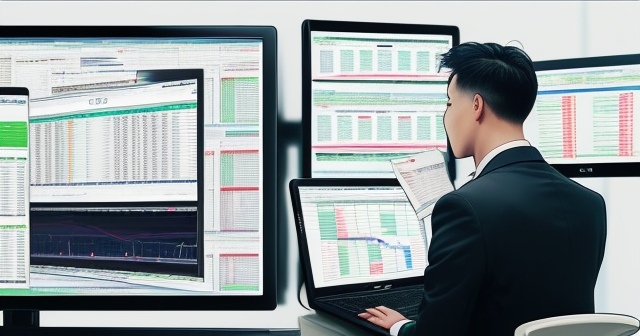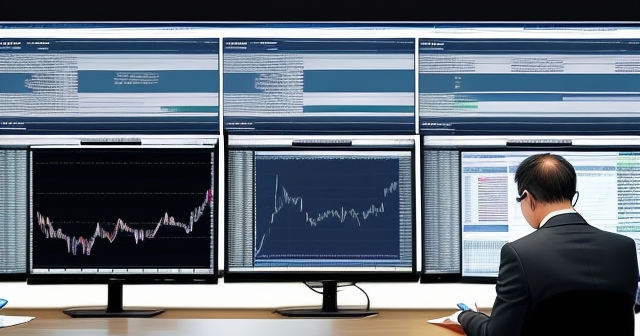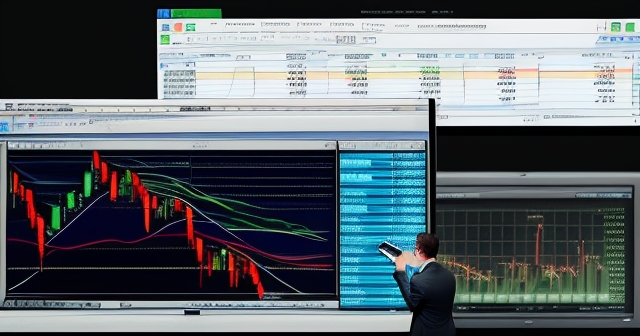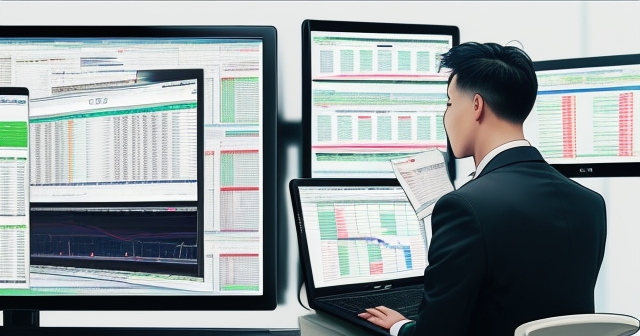Understanding the Forex Broker Business Model: How Do They Really Make Money?
The foreign exchange market, or Forex, stands as the largest financial market globally. With trillions of dollars changing hands daily, it’s a vast and dynamic arena. For you, the individual trader, accessing this immense market requires the assistance of a crucial intermediary: the forex broker. But have you ever stopped to ponder how these brokers, facilitating your trades and providing your platforms, actually generate revenue from this colossal market?
It’s a fundamental question, and understanding the answer is vital for any trader, whether you’re just starting out or seeking to deepen your knowledge. Knowing your broker’s business model helps you assess their fee structure, understand potential conflicts of interest, and ultimately, choose a partner that aligns with your trading goals and risk tolerance. Let’s pull back the curtain and explore the primary mechanisms through which forex brokers make their money.

The cornerstone of a forex broker’s income is derived from facilitating your trades. Think of them as the gatekeepers providing access to the global network of banks and financial institutions where currency pairs are bought and sold. They don’t typically set the absolute price of a currency pair; rather, they aggregate prices from various liquidity providers and present them to you, adding their own margin.
There are two principal ways they add this margin and earn their revenue:
- Spreads: This is arguably the most common method. For any currency pair, there are two prices presented: the bid price (the price at which you can sell the base currency) and the ask price (the price at which you can buy the base currency). The ask price is always slightly higher than the bid price. The difference between these two prices is the spread. When you open a trade, you effectively pay this spread. The broker captures this difference as their profit for connecting your order to the market. For instance, if EUR/USD has a bid of 1.1000 and an ask of 1.1001, the spread is 0.0001, or 1 pip. If you buy EUR/USD, your position starts slightly negative, reflecting the cost of the spread. This cost is captured by the broker.
- Commissions: Less common for standard retail spot forex trading (though prevalent in other markets like futures or stocks), some brokers charge a direct fee, or commission, for executing each trade. This commission might be a fixed amount per standard lot traded, or a percentage of the trade value. Brokers who charge commissions often advertise tighter spreads compared to those who rely solely on spreads for revenue. This is because the commission is the explicit fee, separate from the bid-ask difference.
Many brokers combine these models or primarily rely on one. Understanding which model your broker uses, and the specifics of their pricing structure (e.g., typical spreads on major pairs, commission rates per lot), is crucial for evaluating your overall trading costs.

The nature of the spread itself can vary, and this has a direct impact on your trading costs and the broker’s revenue streams. Brokers typically offer either fixed or variable (also known as floating) spreads.
- Fixed Spreads: As the name suggests, a fixed spread theoretically remains constant regardless of market conditions. While appealing in its predictability, a broker offering fixed spreads must account for potential losses when the spread in the underlying market widens significantly (e.g., during news events). To mitigate this, fixed spreads are often slightly wider on average than the typical variable spreads offered by other brokers during calm market periods. The broker absorbs some market risk to offer this predictability to their clients.
- Variable Spreads: These spreads fluctuate based on market conditions such as volatility and liquidity. When the market is calm and liquid, variable spreads can be very tight, sometimes close to zero on major pairs like EUR/USD with certain account types. However, during periods of high volatility or low liquidity (like major news releases or late at night), variable spreads can widen dramatically.
This brings us to the concept of “commission-free” trading. You’ve likely seen brokers advertising “$0 commission” trading. While this is technically true in that no separate fee is charged per trade, the broker still needs to make money. How do they do it? By compensating for the lack of commission through the spread. Brokers offering “commission-free” trading typically build their profit directly into a slightly wider spread compared to brokers who charge a separate commission alongside tighter spreads. So, while you might not see a commission line item, you are still paying the broker through the bid-ask difference. It’s essential to compare the total cost (spread + commission, if applicable) across different brokers, rather than just focusing on one component.
For instance, Broker A might charge a commission of $7 per standard lot ($7 per 100,000 units of the base currency) and offer an average spread of 0.1 pips on EUR/USD. Broker B might offer “$0 commission” but have an average spread of 0.7 pips on EUR/USD. For a standard lot trade, Broker A’s total cost per round turn (opening and closing) is $7 + (0.1 pips * $10/pip) = $7 + $1 = $8 (assuming $10 per pip for a standard lot of EUR/USD). Broker B’s cost is 0 + (0.7 pips * $10/pip) = $7. In this hypothetical example, the “$0 commission” broker is just as expensive for this specific trade size. Always look at the full cost structure.
Understanding fixed vs. variable spreads and the true cost behind “commission-free” offerings empowers you to make informed decisions about which pricing model best suits your trading style. Are you a scalper who needs the tightest possible spreads? Are you a swing trader less concerned with tiny spread differences but prioritizing predictability? Your answer will guide your choice.
If you are considering starting forex trading or exploring more CFD products, then Moneta Markets is a platform worth considering. Hailing from Australia, it offers over 1000 financial instruments, making it suitable for both novice and experienced traders.

Beyond spreads and commissions, the most significant factor influencing how a forex broker makes money, and critically, potential conflicts of interest, lies in their execution model. Brokers primarily operate using one of two models, or a hybrid approach:
- A-Book Model: In this model, the broker acts purely as an intermediary, passing your orders directly to the interbank market or to external liquidity providers (large banks, financial institutions, other brokers). Your trades are offset externally. The broker’s profit in this model comes primarily from the spreads (if they add a small markup to the interbank spread) and/or commissions charged on your trades. Their income is generated from the volume of trading activity, not from your individual trading outcomes. When you make money, it doesn’t directly come out of the A-Book broker’s pocket, as your winning trade is paid by the entity on the other side in the interbank market. This model is generally considered more transparent and reduces the conflict of interest between the broker and the trader. These brokers are often referred to as Straight Through Processing (STP) or Electronic Communication Network (ECN) brokers, though these terms are sometimes used loosely.
- B-Book Model: In this model, the broker does *not* pass your orders to the external market. Instead, they internalize the trades and act as the counterparty to your position. If you buy EUR/USD, the B-Book broker is effectively selling EUR/USD to you from their own book of positions. Their income in this model comes from the net trading losses of their B-booked clients. If you lose money on a trade, that money effectively goes to the broker. If you make money, the broker has to pay you out of their own funds or their pool of client losses. This creates a significant potential conflict of interest: the broker profits when their B-booked clients lose. While some reputable brokers use B-booking as a way to manage order flow (especially for small trades that are inefficient to send to the interbank market), the inherent conflict means traders should be aware of this model.
Many brokers employ a hybrid model, A-booking larger or more consistently profitable clients’ trades and B-booking smaller or less consistent traders’ orders. Some use sophisticated algorithms to decide which trades to B-book and which to A-book based on size, trading style, and profitability history. Understanding whether your broker primarily A-books or B-books is fundamental to grasping their underlying financial incentive and potential risks.
A purely A-Book model aligns the broker’s interests with the trader’s success in a sense, as successful, active traders generate more volume and therefore more spread/commission income. A B-Book model, however, directly pits the broker’s profit against the trader’s profit. Reputable brokers using a B-Book model will often employ sophisticated risk management techniques and may cap their exposure to client wins, but the conflict is undeniable.

The forex market can experience sudden, sharp movements, particularly during major macroeconomic news releases (like interest rate decisions, non-farm payroll data, or central bank statements) or unexpected geopolitical events. These periods of high volatility and reduced liquidity significantly impact how brokers operate and manage their risk, which in turn affects your trading costs and execution.
During high volatility, brokers often react in several ways:
- Spread Widening: This is the most common response. As liquidity providers pull back or widen their own spreads in the interbank market to reflect increased risk, brokers operating on variable spreads pass these wider spreads onto their clients. For B-Book brokers, widening spreads during volatility can also be a risk management tool or even a source of increased revenue as traders rush to place or close trades.
- Slippage: Due to rapid price movements, the price at which you request to execute a trade might be different from the price at which it is actually executed. This is known as slippage. Positive slippage means execution at a better price, negative slippage means execution at a worse price. Brokers’ execution speed and connectivity to liquidity providers influence the degree of slippage. While slippage isn’t direct broker revenue, how a broker handles it (e.g., allowing both positive and negative slippage) reflects their execution policy and can impact your profitability, indirectly affecting how the broker’s B-book performs.
- Requotes: In older ‘instant execution’ models, rather than experiencing slippage, you might receive a ‘requote’ – the broker informs you the price has changed and asks if you accept the new price. This is frustrating as it can prevent you from entering or exiting at your desired price. Requotes are less common now with market execution models, but can still occur, especially during extreme volatility.
- Disabled Trading/Increased Margin: In extremely rare and volatile situations (like the unexpected unpegging of the Swiss Franc from the Euro by the Swiss National Bank in 2015), some brokers may temporarily disable trading on affected pairs or significantly increase margin requirements to protect themselves from excessive risk. This isn’t a direct revenue generator but a risk control measure to prevent potentially catastrophic losses for the broker.
The Swiss Franc event in January 2015 serves as a stark example of how volatility can impact both traders and brokers. When the peg was removed, the CHF’s value against the EUR and USD surged violently in minutes. Many retail traders holding long positions in EUR/CHF or short positions in CHF pairs faced massive losses, exceeding their account balances due to margin. Brokers operating primarily on a B-Book model or those whose A-Book liquidity providers failed to honor prices faced colossal counterparty risk. Some brokers went bankrupt as client losses couldn’t cover the winning side of the trades or the losses incurred by their liquidity providers. This event underscored the inherent risks in the OTC market and the critical importance of broker solvency and risk management.
Broker responses to volatility highlight their operational capabilities and risk appetite. While widened spreads during news can feel punitive to the trader, they are also how many brokers manage their exposure to sudden market gaps and volatility, ensuring their own survival.
When selecting a trading platform, the flexibility and technological advantages of Moneta Markets are worth noting. It supports popular platforms such as MT4, MT5, and Pro Trader, combining high-speed execution with competitive low spread settings to provide an excellent trading experience.

The Over-the-Counter (OTC) nature of the forex market, while offering accessibility and flexibility, also presents unique risks compared to exchange-traded markets. Understanding these risks, how they affect brokers, and how regulation aims to mitigate them is crucial for safeguarding your capital and choosing a trustworthy partner.
Key risks include:
- Counterparty Risk: In an OTC market, you are trading directly with your broker or their liquidity providers. If your broker goes bankrupt (as seen in the Swiss Franc event), you could lose your deposited funds and any profits, especially if client funds are not segregated. In a B-Book model, counterparty risk is even more direct, as the broker is your counterparty.
- Scams and Fraud: The decentralized nature and relatively lower barrier to entry (for starting a brokerage compared to, say, a stock exchange member firm) have historically made the forex market susceptible to fraudulent schemes and unregulated brokers. These range from outright scams (disappearing with client funds) to less transparent practices (manipulating prices or execution in a B-book).
- Margin Trading Risk: While leverage allows you to control a large position with a small amount of capital, it magnifies both potential profits and losses. For brokers, margin trading introduces counterparty risk. If a client’s leveraged position moves sharply against them and their account balance becomes negative, the broker faces the risk of being unable to recover the deficit. This is precisely what happened to several brokers during the 2015 Swiss Franc crisis.
- Lack of Centralized Price Transparency: Unlike a stock exchange with a single, publicly visible order book, forex prices are aggregated from various liquidity providers. While reputable brokers strive for competitive pricing, the lack of a single, universally accepted price means price comparison is vital. Brokers make money on the spread, and understanding their typical spreads, especially under varying market conditions, is part of assessing their pricing transparency and competitiveness.
This is where regulation becomes paramount. Regulatory bodies exist to oversee financial markets and protect investors. In the United States, key regulators include the CFTC (Commodity Futures Trading Commission) and the NFA (National Futures Association), which oversee the derivatives markets, including forex. Other important bodies globally include the FCA in the UK, ASIC in Australia, CySEC in Cyprus, etc.
A well-regulated broker is held to standards regarding capital adequacy (ensuring they have sufficient funds to operate and absorb losses), client fund segregation (keeping your money separate from the broker’s operational funds), reporting, and fair business practices. Trading with a broker regulated by a reputable authority significantly reduces the risk of fraud, insolvency issues, and unfair practices. While regulation doesn’t guarantee profits or protect you from market risk, it provides a layer of oversight and recourse that is absent with unregulated entities.
Therefore, choosing your broker requires due diligence. Beyond looking at minimum deposit, platform features (like MT4, TradingView integration, availability of Expert Advisors/EAs), and customer support, you must deeply investigate their:
- Regulation: Are they regulated by a reputable authority in your jurisdiction or a major financial hub? Verify their license.
- Pricing Structure: Understand their typical spreads and commissions for the pairs you trade, and how spreads behave during news events. Look for transparency in their fee schedule.
- Execution Model: While not always explicitly stated, research or inquire about their execution methods (A-Book, B-Book, STP, ECN). Read reviews focusing on execution quality, slippage, and requotes.
- Client Fund Segregation: Ensure your funds are held in segregated accounts, separate from the broker’s operating capital.
Choosing a broker isn’t just about picking a platform with charts; it’s about selecting a financial partner whose business model is transparent, whose practices are fair, and who operates under robust regulatory oversight. This significantly impacts your trading experience and the safety of your funds.
If you are looking for a regulated forex broker that offers global trading access, Moneta Markets is a strong contender. It holds multiple international regulatory licenses, including FSCA, ASIC, and FSA. They provide comprehensive support packages like segregated client funds, free VPS, and 24/7 multilingual customer service, making them a preferred choice for many traders.

While spreads and commissions, coupled with the A-Book/B-Book models, form the core of a forex broker’s revenue, there are other ways they might generate income or pass costs onto you.
- Swaps or Rollover Fees: If you hold a forex position open overnight, you will either earn or pay a swap fee. This is related to the interest rate differential between the two currencies in the pair. Brokers typically apply their own swap rates, which might include a small markup or fee added to the underlying interbank swap rate. This can become a significant cost (or occasional source of income) for swing traders and position traders who hold trades for multiple days or weeks.
- Inactivity Fees: Some brokers charge a fee if your account remains dormant for a certain period (e.g., 3-6 months) without any trading activity.
- Withdrawal Fees: While less common now, some brokers might charge fees for withdrawing funds, especially via certain methods like bank wires.
- Platform Fees: While basic trading platforms (like MT4 or the broker’s proprietary platform) are usually free, access to advanced platforms, premium tools (like certain news feeds or analysis indicators), or API access might incur a fee.
- Data Fees: Access to historical data or certain news feeds can sometimes come with a subscription cost, which the broker passes on or adds a markup to.
These additional fees are usually secondary to spreads and commissions but can add up over time. It’s crucial to review the broker’s full fee schedule before opening an account to understand all potential costs you might incur. Transparency regarding these fees is another hallmark of a reputable broker.
| Fee Type | Description |
|---|---|
| Swaps or Rollover Fees | Fees paid or earned for holding a position overnight. |
| Inactivity Fees | Fee charged for inactive accounts over a set period. |
| Withdrawal Fees | Fees applied when withdrawing funds from an account. |
Examining specific brokers can help illustrate these concepts. Based on available information, brokers like OANDA and FOREX.com offer different pricing structures in certain regions, serving as good examples.
OANDA, for instance, is known for offering both spread-only and commission-plus-tighter-spread accounts. They often price aggressively on major pairs, reflecting their sophisticated pricing engine that aggregates quotes from multiple liquidity providers. Their spread-only accounts make money directly from the bid-ask difference, while their core commission-based accounts generate revenue from the per-lot commission, with the spread being passed through from their liquidity sources, potentially with a small markup.
FOREX.com also offers various account types, including standard accounts primarily based on spreads and commission-based accounts for more active traders seeking tighter spreads. Their standard account revenue is built into the spread, while their commission accounts rely on the direct fee. Comparing their listed spreads on major pairs (like EUR/USD, GBP/USD, AUD/USD, USD/JPY) across different account types provides a practical illustration of how brokers adjust their pricing models to capture revenue and cater to different trader segments.
| Broker | Account Type | Spread Type |
|---|---|---|
| OANDA | Spread-Only Account | Bid-Ask Difference |
| OANDA | Commission Account | Lower Spread, Fee Per Lot |
| FOREX.com | Standard Account | Spread-Based Revenue |
| FOREX.com | Commission Account | Direct Fee for Tighter Spreads |
For you, the trader, understanding how brokers make money directly translates into understanding your trading costs and identifying potential pitfalls. The broker’s revenue is your expense.
- Spreads are Your Transaction Cost: Every time you open and close a trade, you pay the spread. High-frequency traders like scalpers are particularly sensitive to spread costs, as they trade often for small profits. Wider spreads directly eat into their potential gains.
- Commissions are Explicit Fees: If your broker charges commissions, this is an upfront cost per trade. While sometimes allowing for tighter spreads, you must calculate if the total cost (commission + spread) is competitive.
- Volatility and Spreads Impact Strategy: If your strategy involves trading major news events, you must be prepared for potential significant spread widening. This can trigger stop losses prematurely or make profitable entry/exit difficult. A broker’s handling of slippage during such times also impacts your actual execution price.
- A-Book vs. B-Book Affects Trust: Knowing your broker might be B-booking your trades introduces the uncomfortable possibility that your broker profits from your losses. While regulated brokers using a B-book aren’t necessarily fraudulent, the conflict of interest is inherent. Preferring an A-Book or heavily regulated hybrid broker can offer greater peace of mind.
- Hidden Costs: Be aware of potential inactivity fees, withdrawal fees, or platform fees that can add up.
Essentially, the broker’s revenue model dictates the cost structure you face. A transparent broker makes it easy for you to calculate your total trading costs and understand how your trades are being handled. An opaque broker might have hidden fees or execution practices that work against your profitability.
It’s also worth briefly considering how brokers manage their own risks. Just as leverage is risky for traders, it’s risky for brokers, especially in the B-Book model. Brokers must carefully manage their exposure.
- Netting Positions: A-Book brokers net their client’s positions internally before passing the net exposure to liquidity providers. B-Book brokers also net client positions internally. If clients are roughly split between buying and selling a pair, the broker’s net exposure is low.
- Hedging: If a B-Book broker accumulates a large net exposure (e.g., significantly more clients are long EUR/USD than short), they may choose to partially or fully hedge this risk by taking an opposite position in the external market (A-booking that exposure) to protect themselves from large client wins.
- Stop Outs and Margin Calls: While these mechanisms protect the trader from accumulating excessive debt, they fundamentally protect the broker by closing losing positions before the client’s account balance goes significantly negative, thus limiting the broker’s counterparty risk.
- Monitoring and Analysis: Brokers analyze their clients’ trading patterns and profitability to manage their B-Book risk and decide which clients or trades to potentially A-book.
These internal risk management strategies are essential for a broker’s solvency, particularly for those running a B-Book. Understanding that brokers also face and manage significant risks provides a more complete picture of their operational environment.
While price (spreads and commissions) is a critical factor driven by the broker’s revenue model, other services also play a role in their overall business and value proposition to you.
- Trading Platforms: Offering robust, reliable, and feature-rich platforms (like MT4, MT5, TradingView integration, proprietary platforms) is a major investment for brokers and a key differentiator. The quality and stability of the platform directly impact your ability to trade effectively.
- Trading Tools & Resources: Providing access to analytical tools (indicators, charting packages like TradingView’s advanced charts), news feeds (like Dow Jones FX Select), economic calendars, educational resources, and research can attract and retain traders. These services have associated costs for the broker but enhance the trading experience, encouraging more activity.
- Customer Support: Responsive and knowledgeable customer support is vital, especially in a 24/5 market. Offering support in multiple languages and across various channels (phone, chat, email) is a significant operational cost but crucial for building trust and assisting traders.
- Execution Speed and Reliability: In volatile markets, fast and reliable order execution minimizes slippage and improves the chances of getting your desired price. Brokers invest heavily in technology and infrastructure to achieve this, which is a cost reflected in their service quality and, indirectly, their ability to attract and retain profitable clients (or manage B-book risk).
These services, while not direct revenue streams in the way spreads or commissions are (though some might involve fees), are essential components of the broker’s business. They are investments made to attract clients who will then generate revenue through trading activity. A high-quality service offering can justify slightly wider spreads or commissions for some traders, as it contributes to a better overall trading environment and potentially improved trading outcomes.
Forex brokers are indispensable conduits to the global currency market. They make money primarily through capturing the spread (the difference between the bid and ask price) and/or charging commissions on trades. Understanding the nuances of fixed versus variable spreads and the true cost behind “commission-free” offerings is the first step in evaluating their pricing structure.
Beyond pricing, the broker’s execution model—whether they A-book by passing trades to the interbank market or B-book by internalizing trades and acting as counterparty—is perhaps the most critical factor. The B-book model introduces a potential conflict of interest, as the broker profits from client losses. While reputable brokers manage this risk carefully, awareness is key.
Market volatility, particularly during news events, directly impacts broker operations through spread widening, slippage, and requotes, requiring brokers to employ risk management strategies that affect your trading experience and costs. The risks inherent in the OTC market, including counterparty risk and the potential for fraud, underscore the paramount importance of choosing a broker regulated by a stringent authority like the CFTC or NFA (in the US context) and ensuring client funds are segregated.
Ultimately, for you, the trader, navigating the forex market effectively isn’t just about technical analysis or trading strategies. It’s also about conducting thorough due diligence on your broker. Investigate their regulation, scrutinize their pricing, understand their execution practices, and be aware of all potential fees. Choosing a transparent, well-regulated broker whose business model you understand is a fundamental step towards trading responsibly and increasing your potential for long-term success in the foreign exchange market.
how do forex brokers make moneyFAQ
Q:What are the primary ways forex brokers earn revenue?
A:Forex brokers primarily earn revenue through spreads (the difference between bid and ask prices) and commissions on trades.
Q:What is the difference between A-Book and B-Book brokers?
A:A-Book brokers pass trades directly to the market, while B-Book brokers internalize trades and act as the counterparty, potentially introducing a conflict of interest.
Q:How can volatility affect broker operations and trader costs?
A:During high volatility, brokers may widen spreads, experience slippage, and introduce requotes, which can affect execution prices and overall trading costs for traders.
